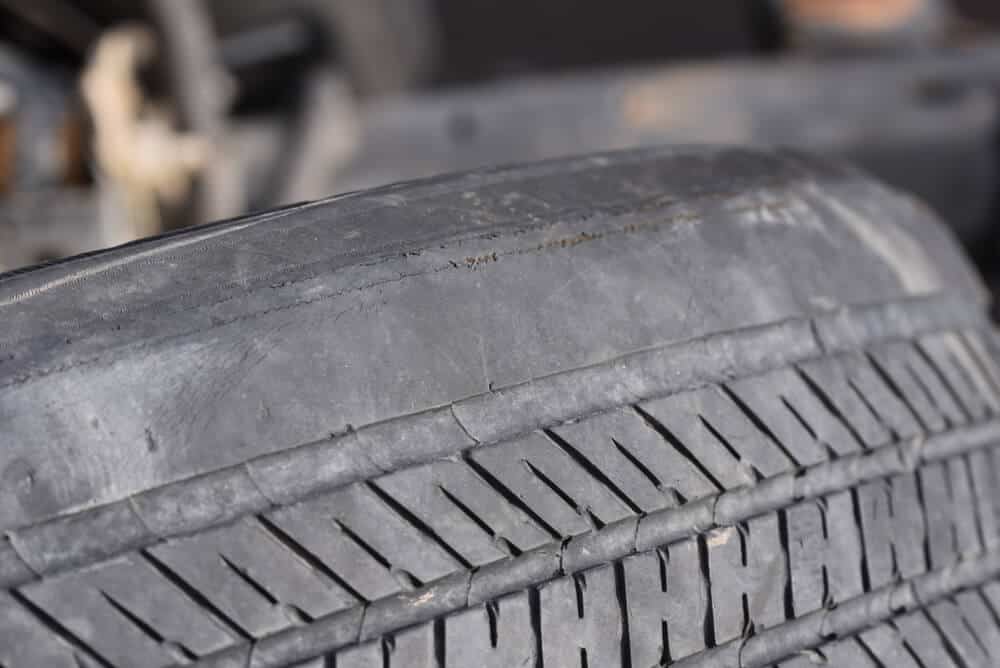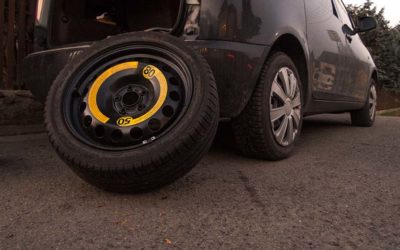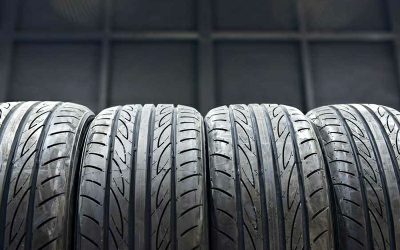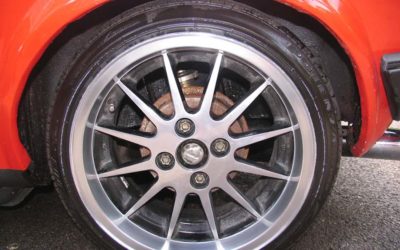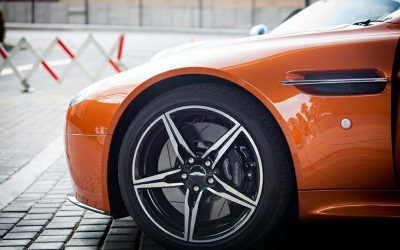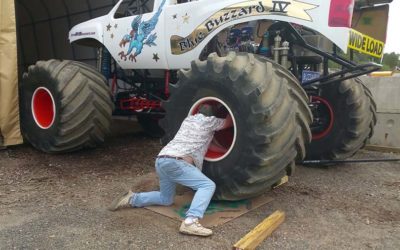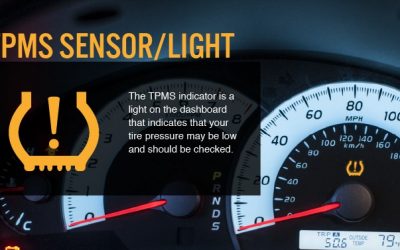Tires are definitely the part that can withstand the most load during transportation. They directly resist various external conditions and ensure maximum driving comfort for the driver.
Therefore, they are at risk of degradation compared to the equipment of other vehicles. Among the errors, tire cupping is one of the most common and challenging issues, affecting your safety as well as the transportation’s efficiency.
What Is A Cupped Tire?
Cupped tires or scalloped tires (in other words) are a status in which tire wear is uneven across its surface. When driving, if you feel a pressure difference between the tires’ parts (if some parts become heavier, you are experiencing the tire cupping error). This condition causes an imbalance between the contact area of the road surface, hindering your safe driving process.
Uneven wear can occur in separate positions, most commonly the center of the tire (reduced convexity), the side edges, and the inner edge (the two wheels face inside).
Which Are Signs Of Tire Cupping?
Fortunately, this issue’s symptoms are not hidden but revealed through drivers’ feelings. Thanks to that, you could recognize and have the error tackled.
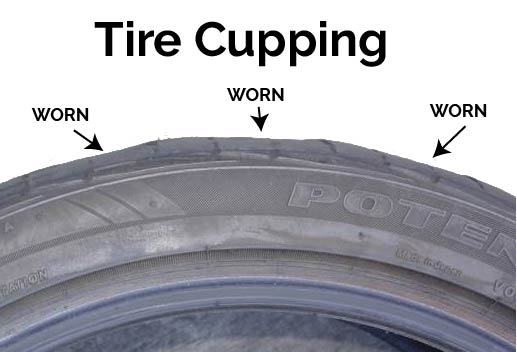
Shock and Vibration
One of the tires’ main tasks is to smoothen your trip without any shock or vibration, which is functioned by the balance and even in pressure distribution. Therefore, cupping tires will offset this ability. The tire can be unbalanced at both front and back wheels.
While cupping the front tires causes a feeling of vibration on the flywheel, that of the back tire creates discomfort in the seat. Whatever position, vibration not only leads to frustration but also decreases the drivers’ concentration.
Noise
Malfunction tires will also make annoying noises while driving, especially when you’re traveling at high speeds. Sound does not come from the engine but by non-standard friction with the contact surface.
Controllability
Uneven tire wear will also be reflected in a decrease in controllability. This symptom will appear more clearly when you turn in different directions.
What Causes Cupping Tires?
What causes cupping on tires? Quite a few reasons in tire engineering could be in charge of this issue, and they also range in several levels, including external impact, alignment, pressure, or engineering. In this session, we will go through the simple to complicated ones.
Contact conditions
Wheels will inevitably wear down over a period of time, but this can happen more quickly if they come into contact with rough or uneven surfaces on a frequent basis. The part that is subject to more impact from rocks will be more abrasive, such as the center of the tire.
Unbalanced Tires
We could understand this via two aspects. The first one is the weight assortment when designing and engineering tires. Some sections are molded with more weight by mistakes.
As a result, the greater the weight, the larger the force. If a part exerts a lot of contact or friction force on the road surface, they are at greater risk of wear.
The other one could be seen in the assembly procedure. Improper and asymmetrical wheel placement can account for uneven rolling, causing scalloped tires.
Air Pressure Distribution
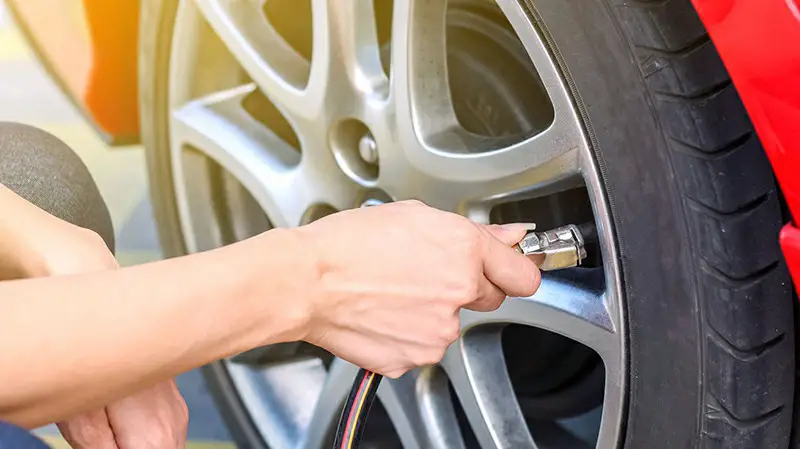
Improperly distributed tire pressure is also a notable cause of cupped tires.
When the tire is fully inflated with air, the middle part (designed to protrude from the rest) will become heavier and exert more force, resulting in faster scalloping. If this situation persists, the contact ability, as well as the braking efficiency, also become blurred.
In addition, tires with excessive air pressure also cause jolts when driving. Constant impact on the road surface is also the culprit behind the cupping issue.
Meanwhile, tires that do not contain enough required air pressure will be flattened to the sides. This error explains cupping sidewalls due to more force resistance than the middle part. As a result, friction is increased, consuming more fuel.
In short, incorrect air pressure causes serious consequences for vehicles’ longevity and drivers’ safety.
How To Prevent Tires From Cupping?
There is no shortage of cases in which tires seriously lost controllability, injuring both vehicles and drivers. Therefore, you had better search for prevention methods. You can save on expensive repair costs. Most important is to keep away from unexpected traffic accidents.
Please don’t focus too much on cheap prices and ignore quality standards when purchasing tires. It is a fact that tires with poor quality and sloppy assembly are not worth your budget.
The most effective way to prevent your tires from cupping is to have your car serviced twice a month. Maintenance specialists can quickly inspect whether your tires are cupped or not. They will suggest assembling or re-aligning gear deviations or angles if needed.
Last but not least, please don’t let your car overload. It would help if you actively visited the workshops to change tires after driving approximately 70000 miles.
Conclusion
Now, you’ve known what causes cupping tires. If you face these errors, visit an auto repair shop for a thorough check-up. Please proactively prevent your vehicles from any engineering issues as much as possible. This way, you not only enhance your vehicle endurance but also preserve your safety.

